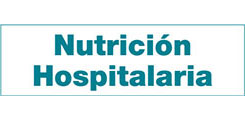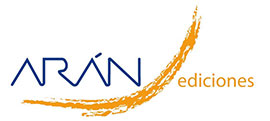Trabajo Original
Effect of low-sodium salt applied to Chinese modified DASH diet on arterial stiffness in older patients with hypertension and type 2 diabetes
Yujia Zou, Jie Tang, Fan Zhang, Dan Chen, Lisha Mu, Huini Xu, Pingping Yu, Yanni Ren, Ying Mei, Lihong Mu
 Número de descargas:
16964
Número de descargas:
16964
 Número de visitas:
6741
Número de visitas:
6741
 Citas:
3
Citas:
3
Compártelo:
Background and purpose: the Dietary Approaches to Stop Hypertension (DASH) diet has multifunctional health benefits. We evaluated the effects of low-sodium salt applied to Chinese modified DASH diet on arterial stiffness in older patients with hypertension and type 2 diabetes. Methods: sixty-one older adults with hypertension and type 2 diabetes were randomly allocated to low sodium salt group (n = 31) or normal sodium salt group (n = 30). They were given the Chinese modified DASH diet plus low-sodium salt (52 % sodium chloride) or same diet plus regular salt (99 % sodium chloride) for eight weeks, respectively. Brachial and ankle pulse wave conduction velocity, ankle brachial index and atherosclerosis-related indices were measured at baseline and week 8. In addition, 24-hour urine and blood samples were measured at baseline, the 4th week and the end of the intervention. Results: as compared with the baseline, the low sodium salt group significantly decreased in ankle brachial index (-0.09 ± 0.11, p < 0.001) and brachial and ankle pulse wave conduction velocity (-133.07 ± 265.99 cm/s, p = 0.010) at week 8 while the normal sodium salt group only decreased significantly in ankle brachial index (-0.06 ± 0.12, p = 0.010) at week 8. Conclusion: the low-sodium salt applied to Chinese modified DASH diet may improve arterial stiffness in patients with hypertension and type 2 diabetes. Further research with an extended follow-up is needed.
Palabras Clave: Hypertension complicated with type 2 diabetes. Low sodium salt. DASH diet. Arterial stiffness. Atherosclerosis related indices.
DOI: 10.1161/ATVBAHA.120.314208
DOI: 10.1155/2019/8295054
DOI: 10.1161/HYPERTENSIONAHA.113.01744
DOI: 10.3390/ijms21051835
DOI: 10.1177/2047487319869400
DOI: 10.1016/j.jacc.2017.10.011
DOI: 10.2174/157340211001141111160957
DOI: 10.1161/HYPERTENSIONAHA.118.12396
DOI: 10.3390/ijms21249474
DOI: 10.1161/CIRCRESAHA.120.317950
DOI: 10.1093/eurheartj/eht151
DOI: 10.1056/NEJMoa2105675
DOI: 10.1038/jhh.2009.32
DOI: 10.1007/s00394-018-1712-3
DOI: 10.1161/01.ATV.0000160548.78317.29
DOI: 10.1097/MNH.0000000000000089
DOI: 10.1152/ajpregu.1995.268.4.R825
DOI: 10.1016/j.clnu.2022.04.002
DOI: 10.1373/clinchem.2015.243923
DOI: 10.1093/ajcn/74.1.80
DOI: 10.1016/j.arcmed.2019.08.009
DOI: 10.1016/j.plefa.2017.03.005
DOI: 10.1001/jamainternmed.2013.6159
DOI: 10.1016/j.amepre.2006.01.009
DOI: 10.1353/hpu.2011.0142
Artículos Relacionados:
Trabajo Original: Adherence to the DASH dietary pattern is associated with blood pressure and anthropometric indicators in Mexican adults
Xochitl Ponce-Martínez , Eloísa Colín-Ramírez , Sonia Rodríguez-Ramírez , Susana Rivera-Mancía , Raúl Cartas-Rosado , Maite Vallejo-Allende
Trabajo Original: Effect of sodium reduction based on the DASH diet on blood pressure in hypertensive patients with type 2 diabetes
Lisha Mu , Pingping Yu , Huini Xu , Tao Gong , Dan Chen , Jie Tang , Yujia Zou , Huakun Rao , Ying Mei , Lihong Mu
Trabajo Original: Effect of 52 % low-sodium salt applied to CM-DASH Diet on atherosclerotic cardiovascular disease risks in patients with hypertension and type-2 diabetes
Jie Tang , Dan Chen , Lisha Mu , Pingping Yu , Tao Gong , Huini Xu , Ziyan Zhang , Shuwen Cai , Lihong Mu , Ying Mei
Trabajo Original: Effect of 23 % low-sodium salt applied to Chinese modified DASH diet on cerebrovascular function in patients with hypertension and type 2 diabetes: a pilot study
Yi Wu , Jie Tang , Dan Chen , Yujia Zou , Pingping Yu , Huini Xu , Shuwen Cai , Yanni Ren , Ying Mei , Lihong Mu
Revisión: Patrones dietéticos asociados a la obesidad y a sus comorbilidades
María Dolores Salas-González , Viviana Loria-Kohen , África Peral-Suárez , Alfredo Trabado-Fernández , Liliana Guadalupe González-Rodríguez
Trabajo Original: Exploring the link between the Naples prognostic score and the cardio-ankle vascular index
Ercan Aydın , Savaş Özer , Ahmet Özderya , Emre Yılmaz , Armağan Kaya , Altuğ Ösken , Gökhan Yerlikaya , Selçuk Yaylacı
Trabajo Original: Effect of low-sodium, potassium-rich salt based on the Chinese modified DASH diet on home blood pressure monitoring in patients with hypertension and type 2 diabetes: a clinical trial
Li Zhao , Jiaxian An , Wenjun Luo , Ying Mei , Xiaoqing Bu , Shili Xian , Pingping Yu , Huang Yao , Lihong Mu
Artículos más populares
Revisión: Inteligencia artificial generativa ChatGPT en nutrición clínica: avances y desafíos
ChatGPT y otras herramientas de inteligencia artif...
Revisión: Suplementación con micronutrientes y sus beneficios: ¿por qué y cuándo?
Introducción: los micronutrientes participan en la...
-
Licencia creative commons: Open Access bajo la licencia Creative Commons 4.0 CC BY-NC-SA
https://creativecommons.org/licenses/by-nc-sa/4.0/legalcode




